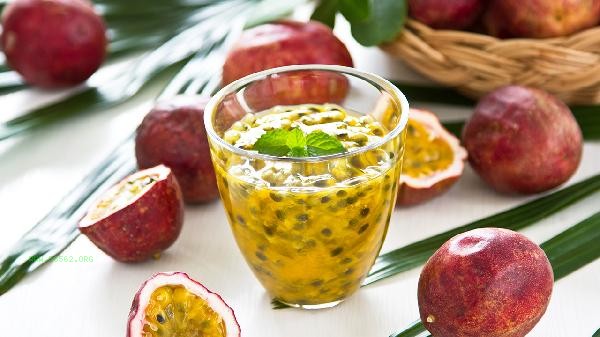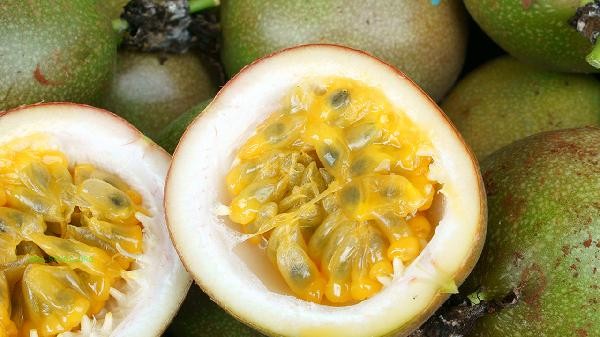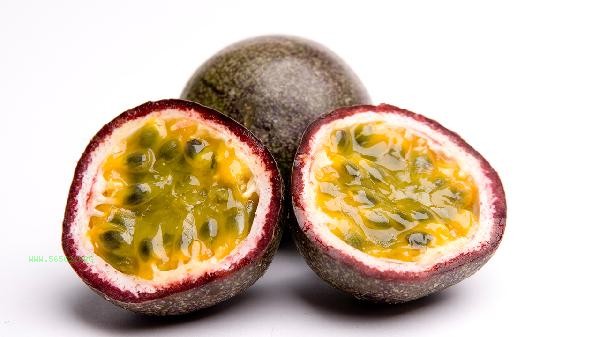Baixiang jam can be made by selecting mature fruits, removing seeds and juice, adding sugar and boiling, bottling and sealing, and refrigerating. Passion fruit is rich in vitamin C and dietary fiber, and homemade jam can retain more nutrients.

1. Select fruits
Choose mature passion fruit with a deep purple and slightly wrinkled skin, which has high sweetness and rich aroma. Gently shaking the fruit can hear the internal juice shaking sound, indicating that the flesh is full. Avoid choosing fruits with damaged or moldy skin. Immature green fruits with high acidity are not suitable for making jam.
2. Processing the flesh
Cut the passion fruit in half, scoop out the flesh and seeds with a spoon, and place them in a strainer. Use the back of a spoon to press and filter out the juice, while retaining some of the seeds to enhance the taste. The filtered juice accounts for about 60% of the total weight, and whether to completely remove the black seeds can be determined according to personal taste. During the processing, avoid using metal containers to come into contact with the fruit pulp to prevent oxidation and discoloration.
3. Sugar preparation
Mix juice and white granulated sugar in a ratio of 1:0.6, and sugar substitutes can be used in diabetes patients. First, pour the juice and sugar into a stainless steel pot and heat over low heat, stirring continuously until the sugar is completely dissolved. When testing the consistency, a small amount of sauce can be dripped onto a cold plate. If it flows slowly but is not easily dispersed, it is considered suitable. During the boiling process, it is necessary to constantly skim off the foam to keep the sauce clear.

4. sterilization and bottling
Boil and disinfect the glass bottle with boiling water, then air dry it. While hot, fill it with jam at 85 degrees Celsius or above until it reaches 1 centimeter from the bottle mouth. Immediately cover the sterilized bottle cap and invert it for 30 minutes, using residual heat to form a vacuum seal. Using high-temperature resistant glass containers can better preserve flavors, while metal containers are prone to react with fruit acids. When bottling, avoid residual bubbles and gently tap the bottom of the bottle to release air.
5. Storage and consumption
Sealed jam can be stored at room temperature for 1 month and refrigerated for up to 3 months. After opening the lid, it needs to be refrigerated and consumed within two weeks. Clean utensils should be used for each use. Jam can be directly applied to bread or used as an ingredient for yogurt or ice cream. If the bottle cap bulges or the jam changes color and flavor, stop eating immediately.

In the process of self-made passion jam, attention should be paid to the control of boiling time. Excessive heating will damage vitamin C. Jams without preservatives should be strictly sterilized. diabetes patients are recommended to use erythritol and other sugar substitutes. When making, a small amount of lemon juice can be added to adjust the acidity, and mixing with mango or pineapple can enrich the flavor layers. Regularly check the sealing during storage, and if any air leakage is found, it needs to be reheated.








Comments (0)
Leave a Comment
No comments yet
Be the first to share your thoughts!